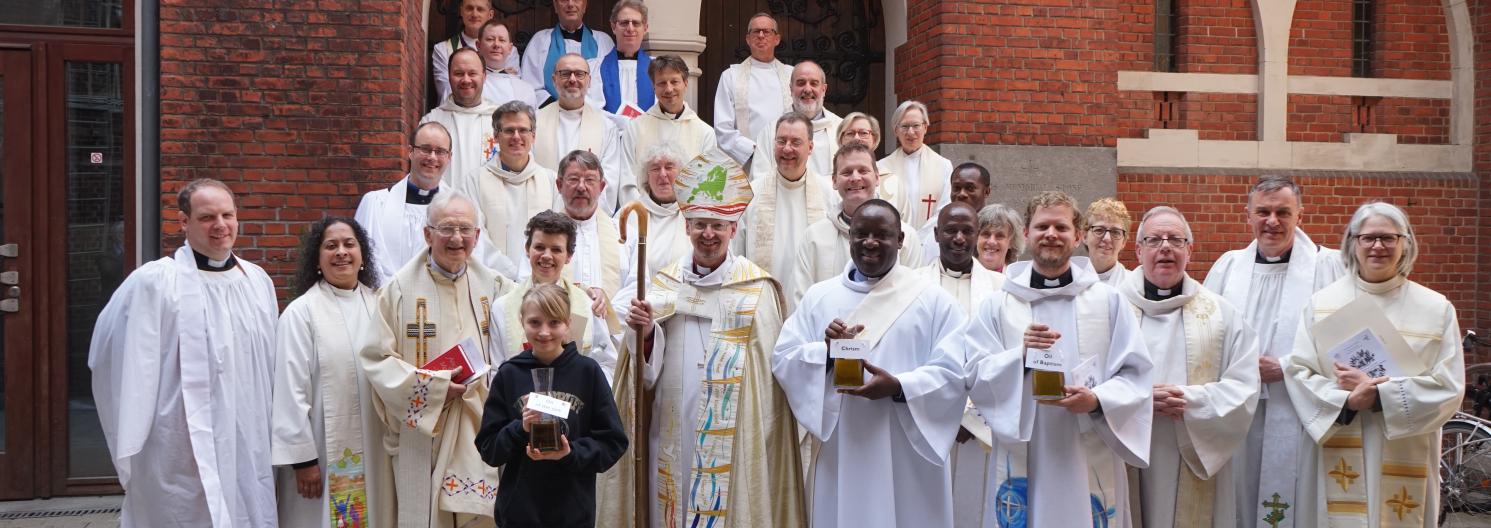A short history of Anglicanism in Continental Europe

The Church of England was present in Continental Europe before the Reformation. The Bible translator William Tyndale was strangled and burned at Vilvoorde in Belgium in 1536 – King Henry VIII of England had earlier asked the Holy Roman Emperor Charles V to extradite him to England to answer charges of sedition for opposing his divorce from Catherine of Aragon, but Charles tried and executed him for heresy.
During the subsequent reign of Mary I, Anglican bishops sought refuge in Protestant European countries. The unique theological blend of Erasmus and Calvin which characterises Anglicanism emerged in this period. Embassy and merchant factory chapels from Hamburg to Istanbul were established in the reigns of Elizabeth I and James I, and Charles I put all Anglican chaplaincies in Europe under the jurisdiction of the Bishop of London in 1633.
After the British victory at Waterloo in 1815, and the increase of peace and stability on the continent, Anglican chaplaincies grew in number and size: in the three years after Waterloo, they were established in Brussels, Boulogne, Rome, Tours, Lausanne and Florence.
By 1845, just after the creation of the Diocese of Gibraltar in 1842, the British churches in Gibraltar and Malta were joined by 25 permanent chaplaincies in France, 18 in Germany, 11 in Italy, nine in Belgium, seven in Russia, four in Switzerland, three in the Netherlands, and two each in Greece, Portugal and Turkey. The Bishop of Gibraltar had responsibility for the Mediterranean basin, but chaplaincies north of the Alps or the French Mediterranean coast remained under the jurisdiction of the Bishop of London, as did Madeira and the Canaries.
Meanwhile, the American Episcopalians founded their own chaplaincies in Paris, Rome and then Florence, Geneva, Dresden and Munich. Since 1971 they have been placed in the care of the Bishop-in-Charge of the American Convocation in Europe. The Spanish Episcopal Reformed Church and the Lusitanian Church (Portugal) are also full member churches of the Anglican Communion.
One reason for founding chaplaincies and for the new Diocese of Gibraltar was an optimistic ecumenism, with strenuous efforts being made not to appear to proselytise among Catholics or Orthodox as well as to begin informal talks with those churches. Hopes for ecumenical progress with Rome were dashed by the conclusions of Vatican I in 1870 and especially by Leo XIII's rejection of the validity of Anglican ministerial orders in 1896. But Anglicans did establish full communion with the Old Catholic Union of Utrecht in 1931, and the general atmosphere of ecumenical cooperation with Catholics, Orthodox and Protestants has been transformed since Vatican II and its Orthodox and Protestant analogues.
The Church of England now enjoys full communion with Scandinavian and Baltic Lutherans and the warmest partial communion with German and French Lutherans and Reformed. The Church of England is also in full communion with the Old Catholic churches of the Union of Utrecht and has a special agreement with the Roman Catholic Church in France.